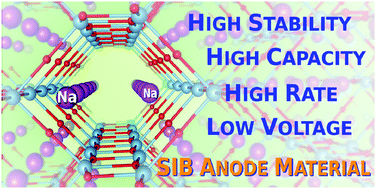First-principles study of NaxTiO2 with trigonal bipyramid structures: an insight into sodium-ion battery anode applications†
Abstract
Developing efficient anode materials with low electrode voltage, high specific capacity and superior rate capability is urgently required on the road to commercially viable sodium-ion batteries (SIBs). Aiming at finding a new SIB anode material, we investigate the electrochemical properties of NaxTiO2 compounds with unprecedented penta-oxygen-coordinated trigonal bipyramid (TB) structures by using first-principles calculations. Identifying the four different TB phases, we perform the optimization of their crystal structures and calculate their energetics such as sodium binding energy, formation energy, electrode potential and activation energy for Na ion migration. The computations reveal that the TB-I phase is the best choice among the four TB phases for a SIB anode material due to a relatively low volume change of under 4% upon Na insertion, low electrode voltage under 1.0 V with a possibility of realizing the highest specific capacity of ∼335 mA h g−1 from full sodiation at x = 1, and reasonably low activation barriers under 0.35 eV at the Na content from x = 0.125 to x = 0.5. Through the analysis of electronic density of states and charge density difference upon sodiation, we find that the NaxTiO2 compounds in TB phases change from electron insulating to electron conducting materials due to the electron transfer from Na atoms to Ti ions, offering the Ti4+/Ti3+ redox couple for SIB operation.



 Please wait while we load your content...
Please wait while we load your content...